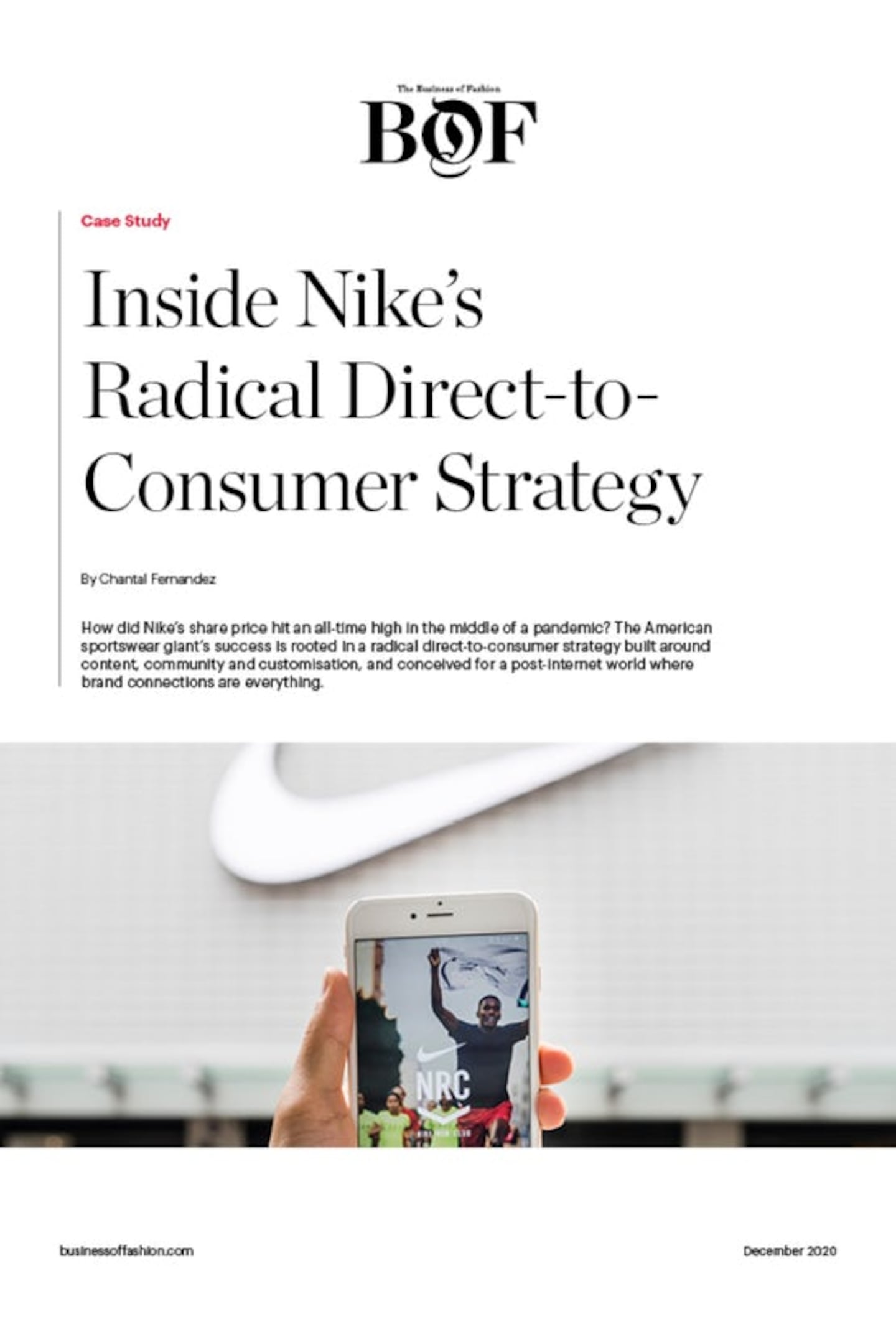
The Business of Fashion
Agenda-setting intelligence, analysis and advice for the global fashion community.

Agenda-setting intelligence, analysis and advice for the global fashion community.

In October 2020, in the middle of a global pandemic that had infected 188 countries, causing record sales damage across the retail sector, Nike’s share price hit an all-time high.
Like other retailers, Nike had been forced to close most of its network of more than 900 stores across the world, as had its key wholesale partners like Nordstrom and Foot Locker.
But the American sportswear giant’s performance during the pandemic, when its online sales spiked, signalled to many that Nike had the competency to prosper long term, in a future that will be increasingly defined by e-commerce and digital brand connections.
It was a validation of a strategy that Nike prioritised three years ago, dubbing it “Consumer Direct Offense,” but the seeds of the approach go back almost a decade.
ADVERTISEMENT
Above all, Nike is a marketing company. It doesn’t just sell sneakers; it sells the brand aspiration that imbues those sneakers with meaning. But to achieve the reach required to scale its business, Nike’s distribution strategy had long-relied on third-party retailers to sell its products, even if the consumer experience offered by those partners diluted its brand.
But in a future increasingly defined by e-commerce, fast-moving trends and, above all, the rising power of branding to drive consumer preference when competitors are just a click away, Nike realised that in order to thrive, it needed to take control of its distribution to better manage its brand and deepen its connection with consumers.
It was definitely architecting a new retail, and a bold, retail vision for Nike.
Such an evolution is easier said than done, especially for a business as large as Nike in a category as competitive as sportswear. But by radically cutting back on its wholesale distribution and raising the bar for brand experience with the third-party partners that remained; expanding its focus on content, community and customisation to keep customers close; investing in its data analytics and logistics capabilities; and rethinking the role of the store as a brand stage, Nike drove a veritable direct-to-consumer revolution.
When the pandemic hit, these shifts went into overdrive.
“It was definitely architecting a new retail, and a bold, retail vision for Nike,” said Heidi O’Neill, Nike’s president of consumer and marketplace, and one of the most prominent executives leading the brand’s new strategy in recent years. “But it started with our consumer, and we knew that consumers wanted a more direct relationship with us today.”
In this case study, BoF breaks down Nike’s pioneering direct-to consumer strategy and how it has worked to the brand’s advantage, propelling its share price to new heights during the global crisis of 2020.
Click below to read the case study now.
Antitrust enforcers said Tapestry’s acquisition of Capri would raise prices on handbags and accessories in the affordable luxury sector, harming consumers.
As a push to maximise sales of its popular Samba model starts to weigh on its desirability, the German sportswear giant is betting on other retro sneaker styles to tap surging demand for the 1980s ‘Terrace’ look. But fashion cycles come and go, cautions Andrea Felsted.
The rental platform saw its stock soar last week after predicting it would hit a key profitability metric this year. A new marketing push and more robust inventory are the key to unlocking elusive growth, CEO Jenn Hyman tells BoF.
Nordstrom, Tod’s and L’Occitane are all pushing for privatisation. Ultimately, their fate will not be determined by whether they are under the scrutiny of public investors.